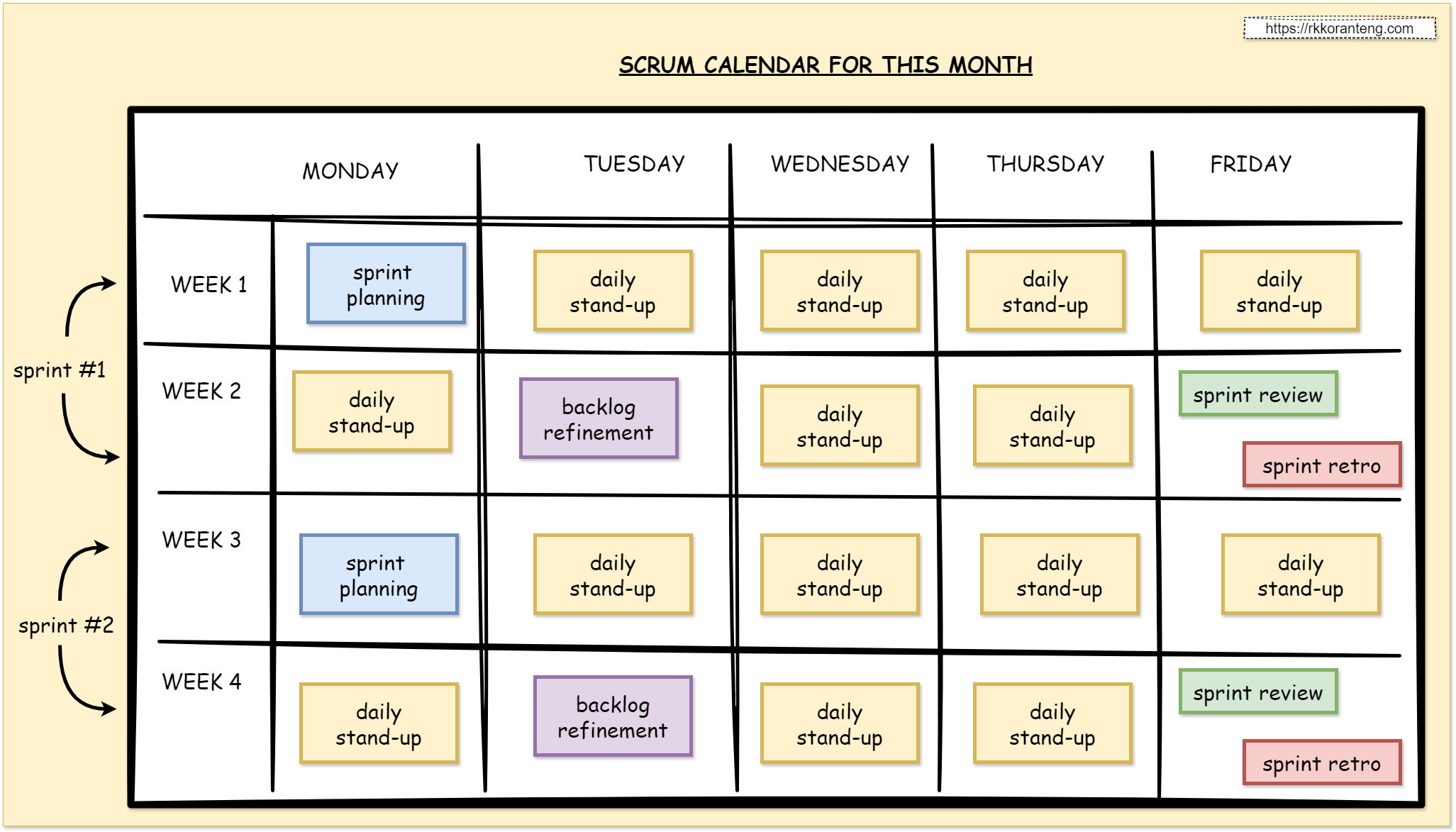Scrum - Summary
Scrum is framework within the agile project management methodology that helps teams deliver value iteratively through collaboration, adaptability, and continuous improvement.
The purpose of Scrum is to help teams deliver high-quality products iteratively by promoting collaboration, transparency, and continuous improvement.
1. Benefits of Scrum
- ✅ Faster delivery: Delivers value incrementally with shorter sprint cycles.
- ✅ Improved Collaboration: Promotes teamwork and communication.
- ✅ Increased flexibility: Adapts quickly to changing requirements.
- ✅ Transparency: Provides visibility into progress and challenges.
- ✅ Customer satisfaction: Regular feedback ensures alignment with user needs.
- ✅ Continuous improvement: Retrospectives drive process enhancements.
Scrum empowers teams to deliver better products efficiently! 🚀
2. Scrum Team Summary
The Scrum Team collaborates to deliver high-quality work in each sprint Here’s who’s makes up the scum team.
- 👉 Developers: Build, test, and deliver the product increment.
- 👉 Product owner: Manages the backlog and ensures the team delivers value aligned with business goals.
- 👉 Scrum Master: Facilitates Scrum processes, removes blockers, and promotes continuous improvement.
3. Scrum Calendar Summary
A scrum calendar is filled with meetings referred to as “sprint ceremonies” Here’re the sprint ceremonies.
- 👉 Sprint planning: At the start of each sprint, the team plans and commits to work for the sprint.
- 👉 Daily stand-up: A 15-minute daily meeting where the team syncs, discusses progress, and addresses blockers.
- 👉 Backlog refinement: Ongoing activity to review, clarify, and prioritize backlog items for future sprints.
- 👉 Sprint review: At the end of the sprint, the team demonstrates completed work to stakeholders for feedback.
- 👉 Sprint retrospective: After the sprint review, the team reflects on processes and identifies improvements for the next sprint.
This cycle repeats for each sprint to ensure continuous delivery and improvement.
4. How to Do Scrum Correctly
Here’re some best practices when working in a scrum team.
- ✅ Define clear roles: Ensure the Product Owner, Scrum Master, and Developers understand their responsibilities.
- ✅ Set realistic sprint goals: Plan achievable sprint goals aligned with business value.
- ✅ Maintain a refined backlog: Regularly refine and prioritize backlog items.
- ✅ Follow scrum events: Conduct sprint planning, daily stand-ups, sprint reviews, and retrospectives consistently.
- ✅ Adhere to definition of done (DoD): Ensure work meets quality standards before considering it complete.
- ✅ Promote team collaboration: Foster open communication and teamwork.
- ✅ Embrace continuous improvement: Use retrospectives to refine processes and increase efficiency.
Consistently applying these practices ensures successful Scrum implementation.
5. The Don’ts of Scrum
Avoid these costly mistakes when working in a scrum environment.
- ❌ Don’t skip scrum wvents: Missing planning, stand-ups, reviews, or retrospectives weakens team alignment.
- ❌ Don’t change sprint scope midway: Avoid adding or modifying work during the sprint.
- ❌ Don’t ignore backlog refinement: Unrefined backlog items create confusion and delays.
- ❌ Don’t overcommit in sprints: Taking on too much leads to unfinished work.
- ❌ Don’t neglect definition of done (DoD): Incomplete work lowers product quality.
- ❌ Don’t delay feedback: Timely feedback ensures alignment and continuous improvement.
- ❌ Don’t focus only on velocity: Prioritize delivering value over chasing speed.
Avoiding these pitfalls helps ensure successful Scrum practices!
